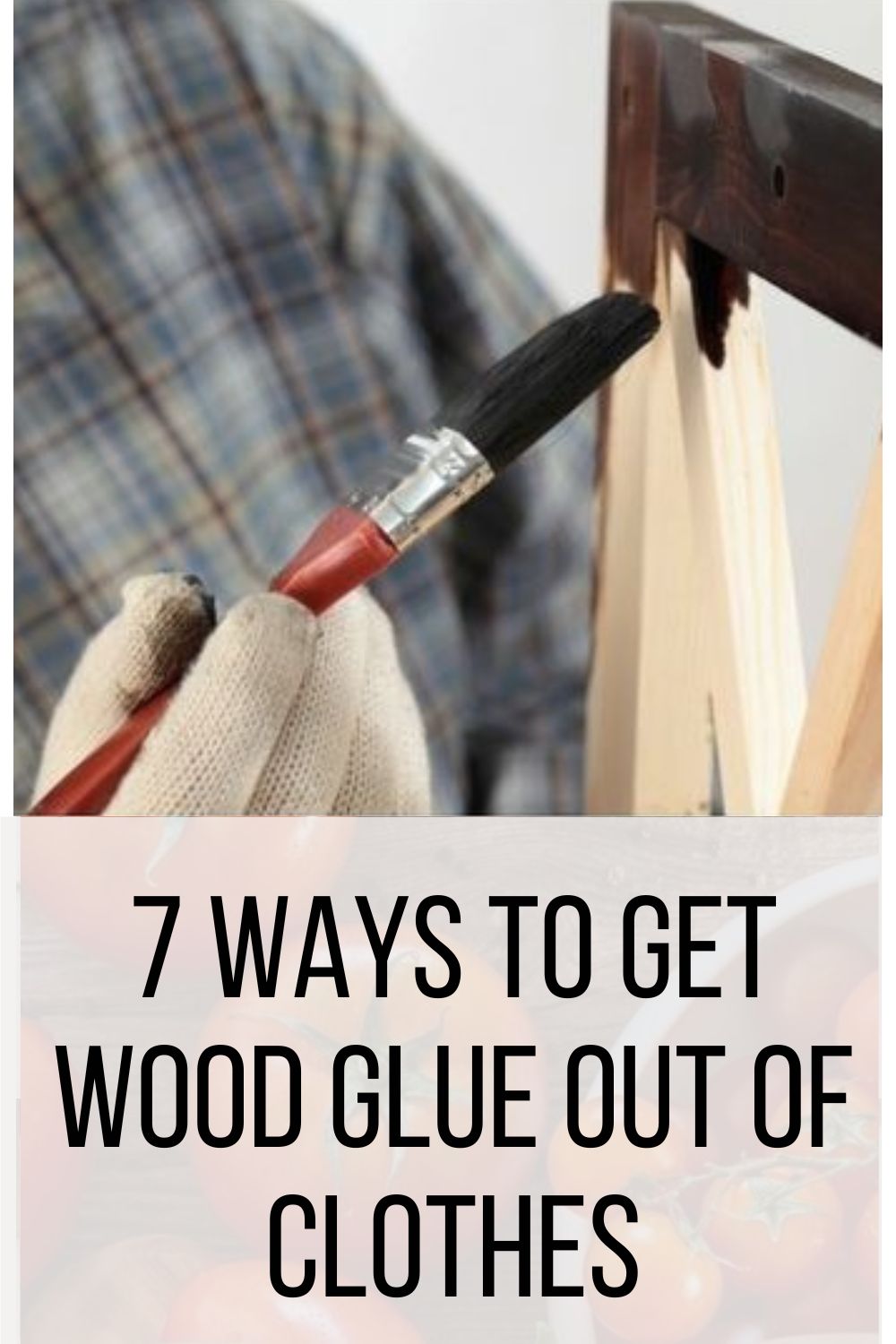
Picture this: As you’re working on your latest woodworking project, you’re fully engrossed in the task at hand. The delicate process of applying wood glue to two perfectly crafted pieces of wood requires your full attention, but just as you’re about to complete the job, disaster strikes!
A single drop of glue lands on your carefully chosen outfit, threatening to ruin not only your clothes but your entire mood for the day. At first, you try to wipe it off quickly, but the glue has already seeped into the fabric, creating an unsightly stain.
If you’ve ever found yourself in this frustrating predicament, you’re not alone. Wood glue stains are a common occurrence for both seasoned DIYers and woodworking beginners alike. Luckily, there’s no need to panic, as we’ve got you covered with seven effective solutions to get that stubborn glue out of your clothes.
Our step-by-step guide will take you through the process, so whether you’re an experienced craftsman or just starting out, you’ll be able to banish those pesky stains and get back to your project with a renewed sense of enthusiasm.
So, let’s dive into the top seven ways to get wood glue out of clothes and say goodbye to those unsightly stains once and for all!
Table of Contents
7 Effective Methods to Remove Wood Glue from Your Clothes
Getting rid of wood glue stains from clothing can be quite challenging, but don’t panic. We’ve got you covered with these 7 practical methods that will make your clothes look as good as new in no time!
Mixture of Vinegar and Water to Remove Wood Glue from Your Clothes
Vinegar is a common household item that can be used to remove wood glue stains from clothes. Follow these simple steps to use vinegar as a solution to remove wood glue stains from your clothes:
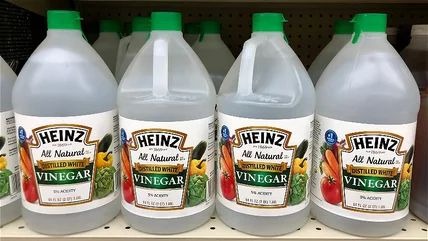
Step 1: Mix Vinegar and Water in Equal Parts
To use vinegar as a solution for removing wood glue stains, mix equal parts of vinegar and water in a bowl or spray bottle. The vinegar will help break down the glue’s adhesive properties, and the water will dilute the solution.
Step 2: Apply the Solution to the Stain
Dab the vinegar and water solution onto the wood glue stain using a clean cloth or sponge. Make sure to saturate the stain with the solution and cover the entire affected area.
Step 3: Allow the Solution to Sit on the Stain
Allow the vinegar and water solution to sit on the wood glue stain for a few minutes. The longer the solution sits, the more effective it will be in breaking down the glue.
Step 4: Rinse the Garment
After the solution has sat on the stain for a few minutes, rinse the garment thoroughly with cold water. Use a clean cloth or sponge to remove any excess vinegar and water solution from the fabric.
Step 5: Repeat the Process if Needed
If the stain persists, repeat the process or try a different method until the glue stain is completely removed.
Using vinegar as a solution to remove wood glue stains from clothes is a natural and non-toxic alternative to tough detergents. But we’d also suggest you use it in a well-ventilated area or outdoors since vinegar can sometimes have a strong odor.
Additionally, vinegar may not be suitable for use on delicate fabrics or those prone to color bleeding as it may cause damage to the garment.
Rubbing Alcohol to Remove Wood Glue from Your Clothes
Most medicine shelves include rubbing alcohol, a common domestic ingredient that works well to remove wood glue stains from clothing. Here’s how to apply it:
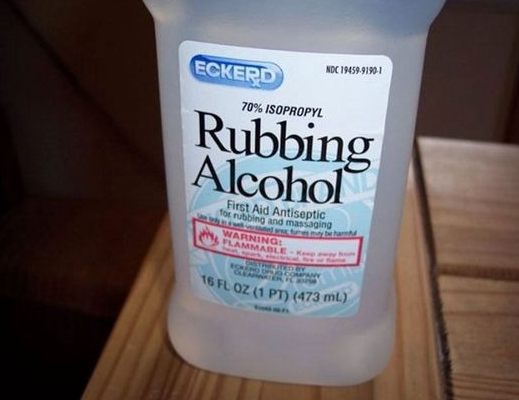
Step 1: Apply the Rubbing Alcohol
Apply a tiny amount of rubbing alcohol with a clean cloth to the glue stain. Ensure the stain is completely covered in rubbing alcohol, then leave it to sit for a while.
Step 2: Scrub the Garment
Clean the damaged area using a fresh cloth or a soft-bristled brush. This will assist in loosening the glue and facilitate removal.
Step 3: Wash with Cold Water
To get rid of the rubbing alcohol and any last bits of glue, wash the item in cold water. Repeat the procedure as necessary to remove the glue stain completely if it remains.
Important Note: Some materials may occasionally be stained or damaged by rubbing alcohol. So, it’s best to test it first on a small, unnoticeable portion of the fabric before using it on the stain as a whole.
Baking Soda to Remove Wood Glue from Your Clothes
Baking soda is a versatile and affordable ingredient that can be utilized for different household cleaning tasks, including removing stubborn wood glue stains from your clothes. With its mild abrasive properties, it can effectively break down the glue and lift it off the fabric fibers.
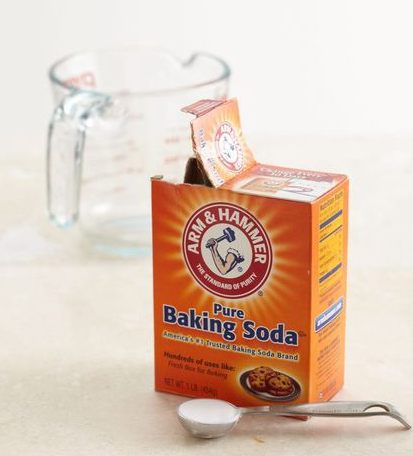
Using baking soda is also a safer and more eco-friendly option compared to harsh chemical stain removers. Follow these steps to get rid of wood glue stains from your clothes using baking soda:
Step 1: Create a Paste with Baking Soda and Water
Mix baking soda with water to create a thick paste. The consistency of the paste should be similar to toothpaste.
Step 2: Apply Paste to the Stain
Apply the paste onto the glue stain and spread it evenly over the affected area. Make sure that the entire stain is covered with the paste.
Step 3: Leave it to Settle
Wait a few minutes before removing the paste from the stain. The adhesive will break down more effectively the longer you leave it sitting.
Step 4: Scrub the Stain
This will aid in loosening the glue and making it simpler to remove. The scrubbing should be done gently to avoid causing damage to the fabric. Keep scrubbing until you notice the glue stain starting to lift off the garment.
Step 5: Run Cold Water on the Garment
Rinse the garment as usual in cold water to remove the baking soda paste and any remaining glue residue.
Acetone to Remove Wood Glue from Your Clothes
Acetone is a powerful and effective solvent that can be used to remove stubborn wood glue stains from clothes. Follow these simple steps to use acetone to remove glue stains:
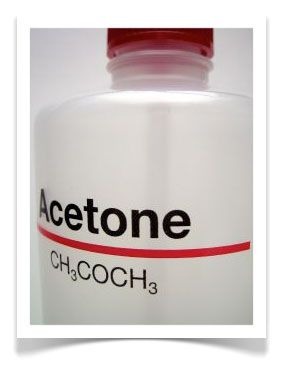
Step 1: Read the Care Instructions on the Cloth
Check the garment’s care label to ensure it can withstand acetone use. Acetone is a strong solvent that can damage some fabrics.
Step 2: Apply Acetone onto the Glue Stain
Dab a small amount of acetone onto a clean, white cloth. Be careful not to soak the cloth with acetone, as this can cause damage to the garment.
Step 3: Let the Acetone Sit on the Stain
Cover the entire affected area, then let it sit for a few minutes to allow the acetone to break down the glue.
Step 4: Blot the Stain with a Clean Cloth
After soaking the garment, gently rub the affected area with a soft-bristled brush or a clean cloth to remove any remaining glue residue. Be careful not to scrub too hard, as this may damage the fabric.
Step 5: Wash as Usual
Rinse the garment thoroughly with cold water to remove any traces of acetone and baking soda. Then, wash the garment as usual in cold water with mild detergent.
Check the garment for any remaining stains before putting it in the dryer, as the heat can set the stain permanently. If any stains remain, repeat the process until the glue is completely removed.
Important Note: Acetone works well to get rid of wood glue stains, but it should only be used sparingly. It is crucial to use gloves and eye protection when handling this chemical because it is powerful and can be damaging to the skin and eyes.
Acetone should only be used in well-ventilated areas away from heat sources and fires because it is also quite combustible.
Freezer to Remove Wood Glue from Your Clothes
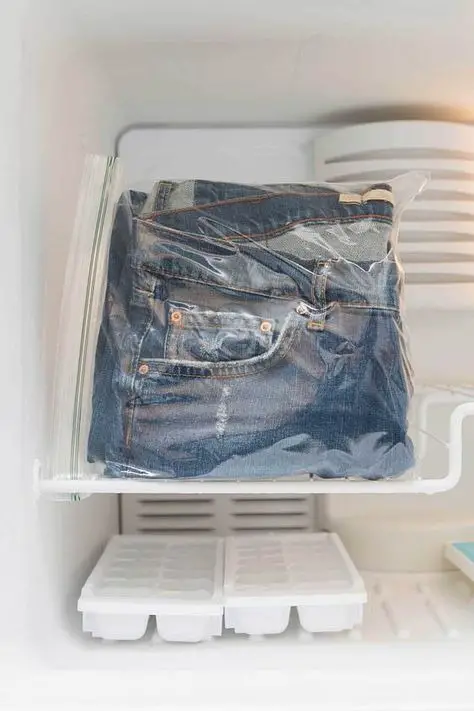
Using the freezer method to remove wood glue stains from clothes is a quick and easy solution that requires minimal effort.
It is also a safer alternative to using harsh chemicals and solvents. With a little patience and the right technique, your clothes look as good as new again.
Step 1: Place the Garment in Freezer
The first step in removing wood glue stains from clothes using the freezer is to place the garment in the freezer for a few hours. This will cause the glue to harden, making it easier to remove from the fabric.
Step 2: Remove the Garment from Freezer
After a few hours, remove the garment from the freezer and take it to a flat surface.
Step 3: Gently Scrape Off the Glue with a Spoon
Using a spoon, gently scrape off the hardened glue from the fabric. Start from the edges of the stain and work your way inwards. Be careful not to damage the material while doing this.
Step 4: Wash the Garment as Usual
After removing as much glue as possible, wash the garment as usual in cold water. Make sure to check the garment for any remaining glue stains before drying it.
Lemon Juice to Remove Wood Glue from Your Clothes
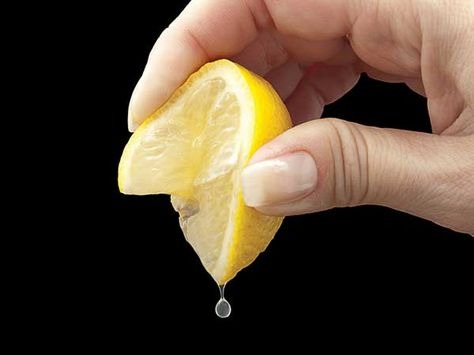
Lemon juice is not just for adding flavor to your dishes; it can also be used as a natural solution for removing glue stains from clothes. The citric acid in lemon juice helps to remove glue from the fabric by breaking down its sticky characteristics.
Here is a step-by-step guide on how to use lemon juice to remove glue stains:
Step 1: Squeeze Fresh Lemon Juice
Squeeze fresh lemon juice onto the glue stain. Make sure the entire stain is covered with the liquid.
Step 2: Allow Lemon Juice to Sit
Let the lemon juice sit on the stain for a few minutes. The longer you let it sit, the more effective it will be in breaking down the glue.
Step 3: Rinse the Garment in Cold Water
After a few minutes, wash the garment as usual in cold water. Repeat the process with fresh lemon juice if the stain persists until the glue stain is completely removed.
Using lemon juice as a solution for removing glue stains has several benefits. It is an all-natural and non-toxic alternative to harsh chemicals, making it safer for both you and the environment.
Additionally, it is readily available in most households and is affordable compared to commercial stain removers.
Important Note: Lemon juice can sometimes bleach or lighten the fabric, so it is advisable to do a patch test on a small, inconspicuous area of the garment before applying it to the stain.
WD-40 to Remove Wood Glue from Your Clothes
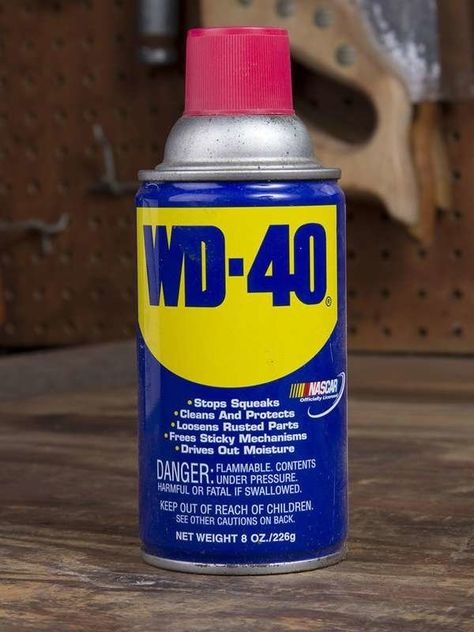
WD-40 is a multi-purpose spray that can be used for various cleaning purposes, including removing stubborn glue stains from clothes.
If you’ve accidentally spilled glue on your clothes, don’t worry – using WD-40 can help get the stain out quickly and easily. Here are the steps to follow:
Step 1: Spray WD-40 on the Glue Stain
Spray a small amount of WD-40 directly onto the glue stain.
Step 2: Let it Sit for a Few Minutes
Allow the WD-40 to sit on the stain for a few minutes. This will help break down the glue and make it easier to remove.
Step 3: Lift the Stain
Using a clean cloth, gently blot the stain to lift the glue out of the fabric.
Step 4: Wash Garment in Cold Water
Rinse the garment in cold water to remove any remaining WD-40 and glue residue.
It’s important to note that WD-40 should be used with caution on delicate fabrics, such as silk or wool. It’s always a good idea to test a small, inconspicuous area of the garment first to ensure the WD-40 doesn’t cause any damage.
Key Takeaway
Wood glue stains are a common problem for anyone who loves woodworking or DIY projects. But don’t let that stop you from pursuing your passions. Whether it’s a small drop or a large spill, these methods are sure to help you get rid of those pesky stains.
You no longer have to worry about ruining your clothes while pursuing your hobbies. These methods are effective, affordable, and easy to use, making it possible for you to enjoy your projects without any fear of staining your clothes.
So, the next time you accidentally spill wood glue on your clothes, don’t fret. Simply refer to our seven ways to get wood glue out of clothes and rest easy knowing that your clothes are in good hands.
Let us know your favorite method of removing wood glue stains from clothes in the comment section below!
Andre Atkins
Monday 15th of April 2024
Pretty! This has been a really wonderful post. Many thanks for providing these details.
Alex Cain
Sunday 14th of April 2024
I am truly thankful to the owner of this web site who has shared this fantastic piece of writing at at this place.
Astina333
Saturday 13th of April 2024
astina 333, astina, AstinaSlot333, Slot, slot tanpa deposit, deposit25, bonus25 deposit25, slotgratis, gameslot tanpa deposit, minimal deposit 5000, slot deposit25, deposit pulsa, deposit pulsa, minimal deposit 5000, depo25 bonus25, bonus25 depo25, depo10k, depo5k, depo slot, bonus depo, depo25+25, link depo , linkslot depo, depo min25, depo pulsa, emoney depo, ovo gopay, slot5k, jackpot333, jackpots, jackpot arcade, jackpot maxwin, linkjackpot, jackpot vip, langsung jackpot, jackpot333 astina, login jackpot, jackpot paus, maxwin jackpot, id jackpot, link alternatif, link alternatif, alternatif login, alternative, linkalternatif, link alternatif login, link alternatif rajaslot, alternatif link, slotlink alternatif, bolabet alternatif, depo alternatif, maxwin, pola maxwin, maxwin333 astina, full maxwin, qqmaxwin, maxwin333, microgaming maxwin, maxwinslot, maxwin, cheat maxwin, maxwinjp, jp maxwin, full rtp, rtp, slot rtp, rtp maxwin, rtpwin, rtp slot, linkslot rtp, slotrtp, rtp tinggi, scatter333 astina, scatter, fullscatter, master scatter, scatter vip, master scatter, scatterslot, petir scatter, scatter, bonus scatter, apk scatter, bonus scatter, slot server thailand, server cambodia, slotserver, slot server kamboja, slot heylink, server slot heylink, server slot, server usa, server gacor, link server, serverindo, server slot singapore, server hoki, slotbesar, slot, slothoki, cuanslot, slotgacor, slotthr, slotthr, hujanslot, slotjitu, slotjitu, merahslot, cheatslot, slotpagcor, jpslot, hokibet, hoki333 astina, hoki77, kode hoki, sanghoki, hokitoto, hokiwinslot, autocuan, autohoki, hoki wd, login hoki, link hoki, hokislot, asiahoki, astina murah 333, 4mg, jual, jual astina 333, astina mulus, mazdaslot, lampu astina 333, resep, dosis astina 333, astina 333 2024, astinaslot333, review slot, kapsulslot
Astina333
Friday 12th of April 2024
astina 333, astina, AstinaSlot333, Slot, slot tanpa deposit, deposit25, bonus25 deposit25, slotgratis, gameslot tanpa deposit, minimal deposit 5000, slot deposit25, deposit pulsa, deposit pulsa, minimal deposit 5000, depo25 bonus25, bonus25 depo25, depo10k, depo5k, depo slot, bonus depo, depo25+25, link depo , linkslot depo, depo min25, depo pulsa, emoney depo, ovo gopay, slot5k, jackpot333, jackpots, jackpot arcade, jackpot maxwin, linkjackpot, jackpot vip, langsung jackpot, jackpot333 astina, login jackpot, jackpot paus, maxwin jackpot, id jackpot, link alternatif, link alternatif, alternatif login, alternative, linkalternatif, link alternatif login, link alternatif rajaslot, alternatif link, slotlink alternatif, bolabet alternatif, depo alternatif, maxwin, pola maxwin, maxwin333 astina, full maxwin, qqmaxwin, maxwin333, microgaming maxwin, maxwinslot, maxwin, cheat maxwin, maxwinjp, jp maxwin, full rtp, rtp, slot rtp, rtp maxwin, rtpwin, rtp slot, linkslot rtp, slotrtp, rtp tinggi, scatter333 astina, scatter, fullscatter, master scatter, scatter vip, master scatter, scatterslot, petir scatter, scatter, bonus scatter, apk scatter, bonus scatter, slot server thailand, server cambodia, slotserver, slot server kamboja, slot heylink, server slot heylink, server slot, server usa, server gacor, link server, serverindo, server slot singapore, server hoki, slotbesar, slot, slothoki, cuanslot, slotgacor, slotthr, slotthr, hujanslot, slotjitu, slotjitu, merahslot, cheatslot, slotpagcor, jpslot, hokibet, hoki333 astina, hoki77, kode hoki, sanghoki, hokitoto, hokiwinslot, autocuan, autohoki, hoki wd, login hoki, link hoki, hokislot, asiahoki, astina murah 333, 4mg, jual, jual astina 333, astina mulus, mazdaslot, lampu astina 333, resep, dosis astina 333, astina 333 2024, astinaslot333, review slot, kapsulslot
Elian Lloyd
Friday 12th of April 2024
I am truly thankful to the owner of this web site who has shared this fantastic piece of writing at at this place.